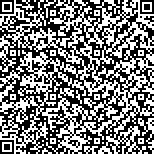| Quote
: |
欧典,李艳玲,刘晓丹,黄小平,张伟,王颂,周峰,李佳婷,邓常清,丁煌.黄芪甲苷与三七总皂苷配伍冰片改善大鼠脑缺血再灌注后肾脏损伤的研究[J].湖南中医药大学学报英文版,2024,44(1):1-8.[Click to copy
] |
|
| |
|
|
| This paper
:Browser 1277times Download 572times |
| 黄芪甲苷与三七总皂苷配伍冰片改善大鼠脑缺血再灌注后肾脏损伤的研究 |
| 欧典,李艳玲,刘晓丹,黄小平,张伟,王颂,周峰,李佳婷,邓常清,丁煌 |
| (湖南中医药大学, 湖南 长沙 410208;中西医结合心脑疾病防治湖南省重点实验室, 湖南 长沙 410208) |
| 摘要: |
| 目的 观察黄芪甲苷(astragaloside Ⅳ,AST Ⅳ)与三七总皂苷(Panax notoginseng saponins,PNS)配伍冰片改善大鼠脑缺血再灌注后肾脏损伤的作用。方法 采用大脑中动脉线栓法建立局灶性脑缺血模型,实验随机分为假手术组、模型组、单用冰片组、AST Ⅳ配伍PNS(AP)组、AST Ⅳ与PNS配伍冰片(APB)组,缺血2 h后再灌注48 h,神经功能评分、HE染色和尼氏染色检测脑组织功能和神经细胞损伤,HE染色检测肾脏损伤,通过肾脏质量指数和血肌酐以及血清中尿素氮含量评价肾脏功能,ELISA法检测血清IL-1β和IL-10含量,免疫组织化学检测肾组织NF-κB蛋白的表达,Western blot检测肾组织TLR4和MyD88蛋白的表达。结果 与假手术组比较,模型组神经功能评分和神经细胞损伤率显著升高(P<0.01),尼氏体数量显著减少(P<0.01),同时肾小管水肿、核固缩,肾脏质量指数降低(P<0.01),血清肌酐和尿素氮含量升高(P<0.01),提示脑缺血再灌注可诱发肾脏继发性损伤。与模型组比较,各药物组均能不同程度地降低神经功能评分(P<0.01),减少神经细胞损伤率(P<0.01或P<0.05),增加尼氏体数量(P<0.01),改善肾脏结构损伤,增加肾脏质量指数(P<0.01或P<0.05),降低血清肌酐和尿素氮含量(P<0.01或P<0.05),以AST Ⅳ与PNS配伍冰片效果最佳。与假手术组比较,模型组血清IL-1β含量升高(P<0.01),肾组织NF-κB、TLR4和MyD88蛋白表达增高(P<0.01)。与模型组比较,各药物组血清IL-1β含量降低(P<0.01或P<0.05),血清IL-10含量升高(P<0.01或P<0.05),肾脏组织中NF-κB、TLR4和MyD88的蛋白表达降低(P<0.01或P<0.05)。结论 脑缺血后可诱发肾脏继发性损伤,AST Ⅳ和PNS配伍冰片除可减轻脑缺血再灌注后脑组织损伤外,还可减轻脑缺血后继发性肾脏损伤,其作用与调控TLR4/MyD88/NF-κB信号通路、抑制肾脏炎症有关。 |
| 关键词: 黄芪甲苷 三七总皂苷 冰片 脑缺血再灌注损伤 肾脏损伤 炎症反应 NF-κB |
| DOI:10.3969/j.issn.1674-070X.2024.01.001 |
| Received:April 19, 2023 |
| 基金项目:湖南省教育厅青年项目(21B0357);湖南省卫生健康委科研计划课题(B202303077469);湖南中医药大学中西医结合一流学科开放基金(2019ZXYJH09,2020ZXYJH69);湖南省大学生创新创业训练计划项目(S202310541101);湖南中医药大学本科生科研创新基金项目(2023BKS065)。 |
|
| Astragaloside IV and Panax notoginseng saponins combined with Bingpian (Borneolum Syntheticum) in improving renal injury after cerebral ischemia-reperfusion in rats |
| OU Dian,LI Yanling,LIU Xiaodan,HUANG Xiaoping,ZHANG Wei,WANG Song,ZHOU Feng,LI Jiating,DENG Changqing,DING Huang |
| (Hunan University of Chinese Medicine, Changsha, Hunan 410208, China;Key Laboratory of Hunan Province for Integrated Chinese and Western Medicine on Prevention and Treatment of Cardio-cerebral Diseases, Changsha, Hunan 410208, China) |
| Abstract: |
| Objective To observe the effects of astragaloside Ⅳ (AST Ⅳ) and Panax notoginseng saponins (PNS) combined with Bingpian (Borneolum Syntheticum) in improving renal injury after cerebral ischemia-reperfusion in rats. Methods A focal cerebral ischemia model was established by middle cerebral artery occlusion method. The rats were randomized into sham-operated group, model group, Bingpian (Borneolum Syntheticum) group, AST Ⅳ combined with PNS (AP) group, and AST Ⅳ and PNS combined with Bingpian (Borneolum Syntheticum) (APB) group. After two hours of ischemia, reperfusion was performed for 48 hours. Neurological function was graded. HE staining and Nissl staining were used to determine brain tissue function and nerve cell damage. In addition, HE staining was used to measure renal injury. Renal function was evaluated by renal mass index and the content of creatinine and urea nitrogen in serum. Moreover, the content of IL-1β and IL-10 was checked by ELISA, NF-κB protein expression in the renal tissue was examined by immunohistochemistry method, and TLR4 and MyD88 protein expressions in the renal tissue were determined by Western blot. Results Compared with sham-operated group, the neurological function score and nerve cell injury rate in model group significantly increased (P<0.01), and the number of Nissl bodies significantly decreased (P<0.01). Additionally, renal tubular edema and nuclear pyknosis were observed, and renal mass index decreased (P<0.01). The content of serum creatinine and urea nitrogen increased (P<0.01). It is suggested that cerebral ischemia-reperfusion can induce secondary renal injury. Compared with model group, all drug groups showed reduced neurological function scores (P<0.01), decreased nerve cell injury rate (P<0.01 or P<0.05), increased number of Nissl bodies (P<0.01), improved renal structural damage, elevated renal mass index (P<0.01 or P<0.05), and lower content of serum creatinine and urea nitrogen (P<0.01 or P<0.05) to varying degrees. APB group had the best effects in these above changes. Compared with sham-operated group, the content of IL-1β in serum and the protein expression levels of NF-κB, TLR4, and MyD88 in the renal tissue of model group increased (P<0.01). Compared with model group, all drug groups showed a decrease in the serum IL-1β content (P<0.01 or P<0.05) and protein expression levels of NF-κB, TLR4, and MyD88 in the renal tissue (P<0.01 or P<0.05), and an increase in the serum IL-10 content (P<0.01 or P<0.05). Conclusion Cerebral ischemia-reperfusion can induce secondary renal injury, and APB can not only alleviate brain tissue damage after cerebral ischemia-reperfusion, but also reduce secondary renal injury after it. Its effects are related to the regulation of the TLR4/MyD88/NF-κB signaling pathways and the inhibition of renal inflammation. |
| Key words: astragaloside Ⅳ Panax notoginseng saponins Bingpian (Borneolum Syntheticum) cerebral ischemia-reperfusion injury renal injury inflammatory response NF-κB |
|

二维码(扫一下试试看!) |
|
|
|
|


